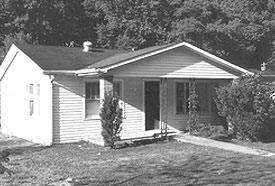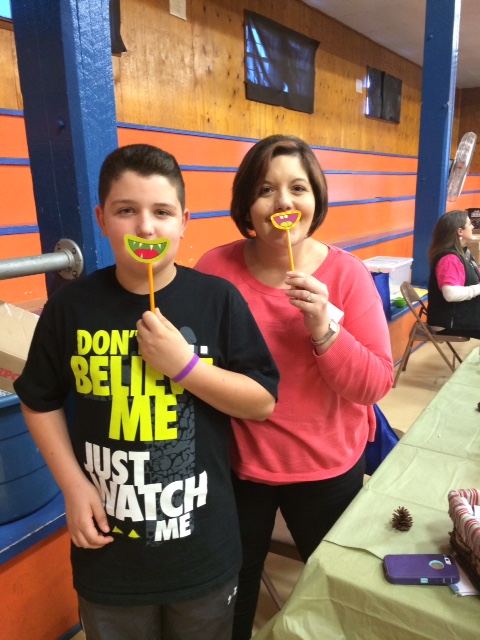Community Health Center: White House Clinics (WHC) | Richmond, Kentucky
Contact: Heidi Kurgat, Enabling Services Line Manager | http://www.whitehouseclinics.com/
 White House Clinics was founded in 1973 in this white dwelling house in McKee, Kentucky by Dr. Phil Curd. Dr. Curd had recently finished a stintwith the PeaceCorps and moved to Kentucky to provide health care to residents of Jackson County, Kentucky. In 2014, White House Clinics now has 8 locations, serving over 30,000 patients in 2014.
White House Clinics was founded in 1973 in this white dwelling house in McKee, Kentucky by Dr. Phil Curd. Dr. Curd had recently finished a stintwith the PeaceCorps and moved to Kentucky to provide health care to residents of Jackson County, Kentucky. In 2014, White House Clinics now has 8 locations, serving over 30,000 patients in 2014.
Enabling services are non-clinical services provided by health centers that aim to increase access to health care and improve health outcomes. These services can include case management, health education, eligibility assistance, outreach, transportation, and interpretation. There are many benefits to offering enabling services, including:
- To help underserved populations overcome financial, cultural, and linguistic barriers to accessing health care services.
- To make health centers more responsive to patient needs, more affordable, and more culturally and linguistically appropriate.
- To connect patients to preventive care and help them manage chronic conditions, thus avoiding costly Emergency Department visits and hospitalizations.

April Ryan, Case Manager, poses with a 4th grade student at the Oral Health education event in Jackson County, Kentucky.
Health centers face many challenges in providing enabling services. First, these services are not adequately funded or reimbursed. Second, health centers do not collect or report standard data, which makes it difficult to understand the similarities and differences of how these services are implemented across the country. To address these challenges, the Association of Asian Pacific Community Health Organizations (AAPCHO) created an Enabling Services Data Collection (ESDC) protocol. This protocol allows health centers to track enabling services in order to analyze patient demographics, enabling services utilization, and the impact of enabling services on patient outcomes. This data can then be used to advocate for funding and resources to support the provision of enabling services.
In 2010, a social worker at White House Clinics (WHC) in Kentucky began implementing the ESDC protocol to show the value of her work. She began by using paper encounter forms to document the enabling services she provided but later used the health center’s electronic medical record (EMR) system. Over time, the health center decided to expand the protocol to care coordinators, outreach and enrollment staff, referral clerks, and financial counselors. The health center also restructured these staff positions into the same department. What began as a single social worker trying out a new protocol to document her work turned into nearly 20 staff members documenting the enabling services they provide at the health center.

April Ryan and Chelsea Cunagin, WHC Case Managers, provided furniture from community resources to a great grandmother who has custody of her four great grandchildren. All are patients at White House Clinic – Berea.
Here are some of the key lessons learned in the process:
- Supportive executive team + IT Support + Champions = Success. This protocol is more successful when it is supported and championed by health center leadership as well as the people who will be carrying it out. These people include the enabling services staff and management, as well as the information technology or information system staff that will integrate it into the health center EMR system. At WHC, the Chief Operating Officer (COO) and social worker were the champions who made the plans and got the rest of the leadership and staff on board.
 Implementation is a process of trial and error: start small and build over time. The protocol requires a pilot phase before full implementation. The pilot provides the opportunity for making a standardized protocol work in a specific setting. In the case of WHC, the social worker piloted the protocol over the course of a year and a half. Even after the pilot, staff at WHC found that they continue to refine the process on an ongoing basis.
Implementation is a process of trial and error: start small and build over time. The protocol requires a pilot phase before full implementation. The pilot provides the opportunity for making a standardized protocol work in a specific setting. In the case of WHC, the social worker piloted the protocol over the course of a year and a half. Even after the pilot, staff at WHC found that they continue to refine the process on an ongoing basis.- Customize templates based on findings from piloting. The protocol and corresponding EMR templates were designed to capture standardized data across health centers. However, health centers can customize the template to make it more specific to its services by creating sub-categories. WHC customized their template after identifying trends in the “other†category. Staff used a free text box to write a description of the service they provided when they used the “other†category. Over time, they identified frequently provided services and created sub-categories for those services so that they could be better counted.
- Improve workflow through standardization and simplification. One way to get staff buy-in on new protocols like ESDC is to simplify and standardize other parts of their daily work. WHC leadership acknowledged that staff already had many responsibilities and worked with them to streamline their workflow before implementing the protocol.
- Use quantitative data from ESDC to show success stories. The enabling services manager runs a monthly report on enabling services. The manager uses the numbers as a way to tell success stories and demonstrate the importance of enabling services positions. She shares these numbers and stories with the health center’s senior leadership, board of directors, and potential funders.
Members of the White House Clinics staff assist with sorting food at a local food bank in Mt. Vernon, Kentucky.
For a guide on how to implement the Enabling Services Data Collection protocol at your health center, go to:http://www.aapcho.org/resources_db/enabling-services-data-collection-implementation-packet/. AAPCHO, HOP, and National Health Care for the Homeless Council (NHCHC) provide training and support to health centers in implementing this protocol.
